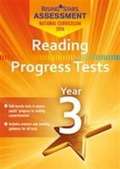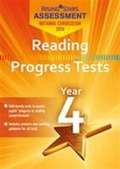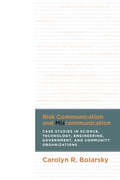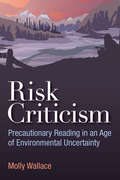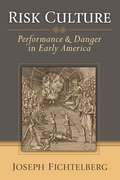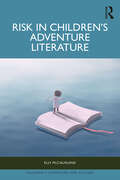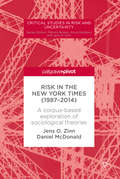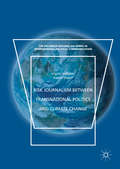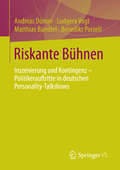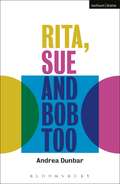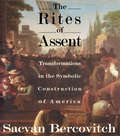- Table View
- List View
Risikomanagement in der Entwicklung und Produktion von Spielfilmen: Wie Produzenten vor Drehbeginn Projektrisiken steuern (The Business of Entertainment. Medien, Märkte, Management)
by Bjørn von RimschaDie Arbeit systematisiert die Risiken in der Entwicklung von Spielfilmprojekten als Vorprodukt der Filmproduktion und als Kuppelprodukt aus Kunst und Ware. Es wird eine ausführliche Literaturübersicht geboten, welche Möglichkeiten für Produzenten theoretisch bestehen, diese Risiken bereits vor Drehbeginn zu steuern, also bevor nicht rückholbare Investitionen getätigt werden. In einer qualitativen empirischen Studie wird untersucht, inwieweit Produzenten in unterschiedlichen Strukturkontexten die theoretisch abgeleiteten Steuerungsmöglichkeiten tatsächlich anwenden. Dabei zeigt sich, dass Produzenten allgemein einen wenig systematischen Umgang mit ihren unterschiedlichen Risiken pflegen und sich insbesondere auf ihre Intuition verlassen. Darüber hinaus wird die Risikosteuerung von den im relevanten Marktumfeld vorhandenen Steuerungsmöglichkeiten bestimmt. Die Risikosteuerung ergibt sich damit als Kombination aus Produzentenressourcen und Marktstruktur.
Rising Stars Assessment: Year 5 (PDF)
by Rick Rachel Gillian HowellReading Comprehension: Practice and Assessment: Year 5
Rising Stars Assessment: Year 6 (PDF)
by Rick, Rachel|Rachel Rick Gillian HowellReading Comprehension: Practice and Assessment: Year 6
Rising Stars Assessment Grammar, Punctuation And Spelling Progress tests Year 4 (PDF)
by Marie LallawayRising Stars' New Curriculum Assessment Grammar, Punctuation and Reading Progress Tests are a whole school approach to the assessment of science for the new Programme of Study. New tests assess technical English skills and understanding in the 2014 Programme of Study; 6 half-termly tests assess pupils' progress throughout the year; All spelling tests are based on contextualised sentences and cover all the words on the statutory spelling list; Differentiation is built into all tests so that they become progressively more demanding and you can monitor pupil progress across the year. Tests based on the model used for the Grammar, Punctuation and Spelling National Tests, so that your pupils are best prepared for the National Tests; CD-ROM includes all content in PDF format and a progress tracker tool. Year 1 English Progress Tests covers reading and grammar, punctuation and spelling tests in one consolidated book
Rising Stars Assessment Grammar, Punctuation and Spelling Progress Tests Year 5 (PDF)
by Marie LallawayRising Stars' New Curriculum Assessment Grammar, Punctuation and Reading Progress Tests are a whole school approach to the assessment of science for the new Programme of Study. New tests assess technical English skills and understanding in the 2014 Programme of Study; 6 half-termly tests assess pupils' progress throughout the year; All spelling tests are based on contextualised sentences and cover all the words on the statutory spelling list; Differentiation is built into all tests so that they become progressively more demanding and you can monitor pupil progress across the year. Tests based on the model used for the Grammar, Punctuation and Spelling National Tests, so that your pupils are best prepared for the National Tests; CD-ROM includes all content in PDF format and a progress tracker tool. Year 1 English Progress Tests covers reading and grammar, punctuation and spelling tests in one consolidated book.
Rising Stars Assessment Reading Progress Tests: Year 3 (PDF)
by Helen BettsAssess pupils progress in gaining reading comprehension skills as required by the new Programme of Study for English. These brand new tests have been developed to support the new National Curriculum 2014.
Rising Stars Assessment Reading Progress Tests: Year 4 (PDF)
by Helen Betts'Rising Stars Assessment Reading Progress Tests' are a whole school approach to the assessment of reading for the new Programme of Study for English.
Risk and Crisis Communication in Europe: Towards Integrating Theory and Practice in Unstable and Turbulent Times (Routledge Research in Communication Studies)
by Audra Diers-Lawson Andreas Schwarz Florian Meissner Silvia RavazzaniThis timely volume offers an international and cross-disciplinary examination of risk and crisis communication theory and practice in Europe.Placing the rapidly developing field of risk and crisis communication within the context of a Europe in flux – experiencing the amplification of the refugee crisis, Brexit, increasing terrorist attacks, a heightened awareness of the climate crisis, and the COVID-19 pandemic – a cross-continental team of experts explore these developments from a theoretical and practical standpoint. Drawing connections between culture, digital technology, identity, public health, politics, and industry, the analysis offers a multitude of perspectives from across the continent and provides ways ahead for the field of risk and crisis communication.This exciting and innovative volume will interest scholars and students of risk and crisis communication, media studies, political communication, public relations, political studies, and international relations.Chapter 5 of this book is freely available as a downloadable Open Access PDF at http://www.taylorfrancis.com under a Creative Commons [Attribution-Non Commercial-No Derivatives (CC-BY-NC-ND)] 4.0 license
Risk and Crisis Communication in Europe: Towards Integrating Theory and Practice in Unstable and Turbulent Times (Routledge Research in Communication Studies)
by Audra Diers-Lawson Andreas Schwarz Florian Meissner Silvia RavazzaniThis timely volume offers an international and cross-disciplinary examination of risk and crisis communication theory and practice in Europe.Placing the rapidly developing field of risk and crisis communication within the context of a Europe in flux – experiencing the amplification of the refugee crisis, Brexit, increasing terrorist attacks, a heightened awareness of the climate crisis, and the COVID-19 pandemic – a cross-continental team of experts explore these developments from a theoretical and practical standpoint. Drawing connections between culture, digital technology, identity, public health, politics, and industry, the analysis offers a multitude of perspectives from across the continent and provides ways ahead for the field of risk and crisis communication.This exciting and innovative volume will interest scholars and students of risk and crisis communication, media studies, political communication, public relations, political studies, and international relations.Chapter 5 of this book is freely available as a downloadable Open Access PDF at http://www.taylorfrancis.com under a Creative Commons [Attribution-Non Commercial-No Derivatives (CC-BY-NC-ND)] 4.0 license
Risk and Health Communication in an Evolving Media Environment
by H. Dan O’HairBroadcast media has a particular fascination with stories that involve risk and health crisis events-disease outbreaks, terrorist acts, and natural disasters-contexts where risk and health communication play a critical role. An evolving media landscape introduces both challenges and opportunities for using communication to manage extreme events and hazardous contexts. Risk and Health Communication in an Evolving Media Environment addresses issues of risk and health communication with a collection of chapters that reflect state-of-the-art discussion by top scholars in the field. The authors in this volume develop unique and insightful perspectives by employing the best available research on topics such as brand awareness in healthcare communication, occupational safety, climate change communication, local broadcasts of weather emergencies, terrorism, and the Ebola outbreak, among many other areas. It features analysis of new and traditional media that connects disasters, crises, risks, and public policy issues into a coherent fabric. This book bridges a substantial, but sometimes disconnected body of literature, and by doing so asks how contexts related to risk and health communication are best approached, how researchers balance scientific findings with cultural issues, and how scholars study an increasingly media-savvy society with traditional research methods.
Risk and Health Communication in an Evolving Media Environment
by H. Dan O'HairBroadcast media has a particular fascination with stories that involve risk and health crisis events-disease outbreaks, terrorist acts, and natural disasters-contexts where risk and health communication play a critical role. An evolving media landscape introduces both challenges and opportunities for using communication to manage extreme events and hazardous contexts. Risk and Health Communication in an Evolving Media Environment addresses issues of risk and health communication with a collection of chapters that reflect state-of-the-art discussion by top scholars in the field. The authors in this volume develop unique and insightful perspectives by employing the best available research on topics such as brand awareness in healthcare communication, occupational safety, climate change communication, local broadcasts of weather emergencies, terrorism, and the Ebola outbreak, among many other areas. It features analysis of new and traditional media that connects disasters, crises, risks, and public policy issues into a coherent fabric. This book bridges a substantial, but sometimes disconnected body of literature, and by doing so asks how contexts related to risk and health communication are best approached, how researchers balance scientific findings with cultural issues, and how scholars study an increasingly media-savvy society with traditional research methods.
Risk Communication and Miscommunication: Case Studies in Science, Technology, Engineering, Government, and Community Organizations
by Carolyn BoiarskyEffective communication can help prevent or minimize damage from environmental disasters. In Risk Communication and Miscommunication, Carolyn Boiarsky teaches students, technical writers, public affairs officers, engineers, scientists, and governmental officials the writing and communication skills necessary for dealing with environmental and technological problems that could lead to major crises. Drawing from research in rhetoric, linguistics, technical communication, educational psychology, and web design, Boiarsky provides a new way to look at risk communication. She shows how failing to consider the readers’ needs and the rhetorical context in which a document is read can be catastrophic and how anticipating those needs can enhance effectiveness and prevent disaster. She examines the communications and miscommunications of original e-mails, memos, and presentations about various environmental disasters, including the Columbia space shuttle breakup and the BP/Deepwater Horizon oil rig explosion, and successes, such as the Enbridge pipeline expansion and the opening of the Mississippi Spillway, offering recommendations for effective communication. Taking into account the growing need to communicate complex and often controversial issues across vast geographic and cultural spaces with an ever-expanding array of electronic media, Risk Communication and Miscommunication provides strategies for clear communication of data, ideas, and procedures to varied audiences to prevent or minimize damage from environmental incidents.
Risk Communication for the Future: Towards Smart Risk Governance and Safety Management (SpringerBriefs in Applied Sciences and Technology)
by Mathilde Bourrier Corinne BiederThe conventional approach to risk communication, based on a centralized and controlled model, has led to blatant failures in the management of recent safety related events. In parallel, several cases have proved that actors not thought of as risk governance or safety management contributors may play a positive role regarding safety. Building on these two observations and bridging the gap between risk communication and safety practices leads to a new, more societal perspective on risk communication, that allows for smart risk governance and safety management. This book is Open Access under a CC-BY licence.
Risk Criticism: Precautionary Reading in an Age of Environmental Uncertainty
by Molly WallaceRisk Criticism is a study of literary and cultural responses to global environmental risk in an age of unfolding ecological catastrophe. In 2015, the Bulletin of the Atomic Scientists reset its iconic Doomsday Clock to three minutes to midnight, as close to the apocalypse as it has been since 1953. What pushed its hands was not just the threat of nuclear weapons, but also other global environmental risks that the Bulletin judged to have risen to the scale of the nuclear, including climate change and innovations in the life sciences. If we may once have believed that the end of days would come in a blaze of nuclear firestorm, we now suspect that the apocalypse may be much slower, creeping in as chemical toxins, climate change, or nano-technologies run amok. Taking inspiration from the questions raised by the Bulletin’s synecdochical “nuclear,” Risk Criticism aims to generate a hybrid form of critical practice that brings “nuclear criticism” into conversation with ecocriticism. Through readings of novels, films, theater, poetry, visual art, websites, news reports, and essays, Risk Criticism tracks the diverse ways in which environmental risks are understood and represented today.
Risk Culture: Performance and Danger in Early America
by Joseph Fichtelberg"As a number of recent studies have shown, the north European commercial world made the precise calculation of risk a central concern of the intellectual project of exploration, trade, and colonization. The great merit of Fichtelberg's book is systematizing the imaged world of dangers, and charting the various kinds of ritual and discursive performances marshaled to deal with the pressure of the unspeakable in early America from the 17th into the early 19th century. The readings of texts are invariably careful, and the points made, persuasive." ---David Shields, University of South Carolina Risk Culture is the first scholarly book to explore how strategies of performance shaped American responses to modernity. By examining a variety of early American authors and cultural figures, from John Smith and the Salem witches to Phillis Wheatley, Susanna Rowson, and Aaron Burr, Joseph Fichtelberg shows how early Americans created and resisted a dangerously liberating new world. The texts surveyed confront change through a variety of performances designed both to imagine and deter menaces ranging from Smith's hostile Indians, to Wheatley's experience of slavery, to Rowson's fear of exposure in the public sphere. Fichtelberg combines a variety of scholarly approaches, including anthropology, history, cultural studies, and literary criticism, to offer a unique synthesis of literary close reading and sociological theory in the service of cultural analysis. Joseph Fichtelberg is Professor of English and Chair of the English Department at Hofstra University.
Risk in Children’s Adventure Literature (Children's Literature and Culture)
by Elly McCauslandRisk in Children’s Adventure Literature examines the way in which adults discuss the reading and entertainment habits of children, and with it the assumption that adventure is a timeless and stable constant whose meaning and value is self-evident. A closer enquiry into British and American adventure texts for children over the past 150 years reveals a host of complexities occluded by the term, and the ways in which adults invoke adventure as a means of attempting to get to grips with the nebulous figure of ‘the child’. Writing about adventure also necessitates writing about risk, and this book argues that adults have historically used adventure to conceptualise the relationship between children and risk: the risks children themselves pose to society; the risks that threaten their development; and how they can be trained to manage risk in socially normative and desirable ways. Tracing this tendency back to its development and consolidation in Victorian imperial romance, and forward through various adventure texts and media to the present day, this book probes and investigates the truisms and assumptions that underlie our generalisations about children’s love for adventure, and how they have evolved since the mid-nineteenth century.
Risk in Children’s Adventure Literature (Children's Literature and Culture)
by Elly McCauslandRisk in Children’s Adventure Literature examines the way in which adults discuss the reading and entertainment habits of children, and with it the assumption that adventure is a timeless and stable constant whose meaning and value is self-evident. A closer enquiry into British and American adventure texts for children over the past 150 years reveals a host of complexities occluded by the term, and the ways in which adults invoke adventure as a means of attempting to get to grips with the nebulous figure of ‘the child’. Writing about adventure also necessitates writing about risk, and this book argues that adults have historically used adventure to conceptualise the relationship between children and risk: the risks children themselves pose to society; the risks that threaten their development; and how they can be trained to manage risk in socially normative and desirable ways. Tracing this tendency back to its development and consolidation in Victorian imperial romance, and forward through various adventure texts and media to the present day, this book probes and investigates the truisms and assumptions that underlie our generalisations about children’s love for adventure, and how they have evolved since the mid-nineteenth century.
Risk in The New York Times: A corpus-based exploration of sociological theories (Critical Studies in Risk and Uncertainty)
by Jens O. Zinn Daniel McDonaldThis book investigates to what extent claims of common social science risk theories such as risk society, governmentality, risk and culture, risk colonisation and culture of fear are reflected in linguistic changes in print news media. The authors provide a corpus-based investigation of risk words in The New York Times (1987-2014) and a case study of the health domain. The book presents results from an interdisciplinary enterprise which combines sociological risk theories with a systematic functional theory of language to conduct an empirical analysis of linguistic patterns and social change. It will be of interest to students and scholars interested in corpus linguistics and digital humanities, and social scientists looking for new research strategies to examine long term social change.
Risk Journalism between Transnational Politics and Climate Change (The\palgrave Macmillan Series In International Political Communication Ser.)
by Ingrid Volkmer Kasim SharifRisk Journalism between Transnational Politics and Climate Change
The Risk of Reading: How Literature Helps Us to Understand Ourselves and the World
by Robert P. WaxlerThe Risk of Reading is a defense of the idea that deep and close readings of literature can help us to understand ourselves and the world around us. It explores some of the meaning and implications of modern life through the deep reading of significant books. Waxler argues that we need "fiction" to give our so-called "real life" meaning and that reading narrative fiction remains crucial to the making of a humane and democratic society.Beginning by exploring the implications of thinking about the importance of story in terms of "real life", The Risk of Reading focuses on the importance of human language, especially language shaped into narrative, and how that language is central to the human quest for identity. Waxler argues that we are "linguistic beings," and that reading literary narrative is a significant way to enrich and preserve the traditional sense of human identity and knowledge. This is especially true in the midst of a culture which too often celebrates visual images, spectacle, electronic devices, and celebrity. Reading narrative, in other words, should be considered a counter-cultural activity crucial on the quest to "know thyself." Reading literature is one of the best opportunities we have today to maintain a coherent human identity and remain self-reflective individuals in a world that seems particularly chaotic and confusing. Each chapter takes up a well-known work of nineteenth- or twentieth-century literature in order to discuss more fully these issues, exploring, in particular, the notion of life as a journey or quest and the crucial relationship between language and our contingent everyday existence. Of particular interest along the way is the question of what literary narrative can teach us about our mortality and how stories offer opportunities to reflect on the ambivalent and profound meaning of mortal knowledge.
The Risk of Reading: How Literature Helps Us to Understand Ourselves and the World
by Robert P. WaxlerThe Risk of Reading is a defense of the idea that deep and close readings of literature can help us to understand ourselves and the world around us. It explores some of the meaning and implications of modern life through the deep reading of significant books. Waxler argues that we need "fiction" to give our so-called "real life" meaning and that reading narrative fiction remains crucial to the making of a humane and democratic society.Beginning by exploring the implications of thinking about the importance of story in terms of "real life", The Risk of Reading focuses on the importance of human language, especially language shaped into narrative, and how that language is central to the human quest for identity. Waxler argues that we are "linguistic beings," and that reading literary narrative is a significant way to enrich and preserve the traditional sense of human identity and knowledge. This is especially true in the midst of a culture which too often celebrates visual images, spectacle, electronic devices, and celebrity. Reading narrative, in other words, should be considered a counter-cultural activity crucial on the quest to "know thyself." Reading literature is one of the best opportunities we have today to maintain a coherent human identity and remain self-reflective individuals in a world that seems particularly chaotic and confusing. Each chapter takes up a well-known work of nineteenth- or twentieth-century literature in order to discuss more fully these issues, exploring, in particular, the notion of life as a journey or quest and the crucial relationship between language and our contingent everyday existence. Of particular interest along the way is the question of what literary narrative can teach us about our mortality and how stories offer opportunities to reflect on the ambivalent and profound meaning of mortal knowledge.
Riskante Bühnen: Inszenierung und Kontingenz – Politikerauftritte in deutschen Personality-Talkshows
by Andreas Dörner Ludgera Vogt Matthias Bandtel Benedikt PorzeltPolitiker können sich in Personality-Talkshows als umgängliche Menschen präsentieren und ein breites, auch politik- und bildungsfernes Publikum ansprechen. Allerdings bergen solche Medienauftritte auch Risiken. In den Interaktionen zwischen Moderation, Redaktion, Gästen und Studiopublikum können sich unvorhersehbare Situationen entwickeln und die mediale Inszenierung durch Kameraarbeit, Bildregie und Einspielfilme schreibt dem Geschehen ganz eigene Bedeutungen zu. Die Studie rekonstruiert diese komplexe Logik über Sendungsanalysen und empirische Feldforschung, inklusive sozialwissenschaftlicher Interviews mit Politikern, Medienakteuren und Beratern.
Rita, Sue and Bob Too (Modern Plays)
by Andrea DunbarDo you think it would be better if you and me got ourselves steady boyfriends?Best friends Rita and Sue get a lift home from married Bob after babysitting his kids. When he takes the scenic route and offers them a bit of fun, the three start a fling each of them think they control.Andrea Dunbar's semi-autobiographical play, written for the Royal Court Theatre in 1982 when she was just 19, is a vivid portrait of girls caught between brutal childhood and an unpromising future, both hungry for adult adventure.Told with wicked humour, startling insight and a great ear for dialogue, this new edition of Rita Sue and Bob Too was published to coincide with director Max Stafford-Clark's major new production produced by Out of Joint, Bolton Octagon and the Royal Court Theatre.
Rita, Sue and Bob Too (Modern Plays)
by Andrea DunbarDo you think it would be better if you and me got ourselves steady boyfriends?Best friends Rita and Sue get a lift home from married Bob after babysitting his kids. When he takes the scenic route and offers them a bit of fun, the three start a fling each of them think they control.Andrea Dunbar's semi-autobiographical play, written for the Royal Court Theatre in 1982 when she was just 19, is a vivid portrait of girls caught between brutal childhood and an unpromising future, both hungry for adult adventure.Told with wicked humour, startling insight and a great ear for dialogue, this new edition of Rita Sue and Bob Too was published to coincide with director Max Stafford-Clark's major new production produced by Out of Joint, Bolton Octagon and the Royal Court Theatre.
The Rites of Assent: Transformations in the Symbolic Construction of America
by Sacvan BercovitchThe Rites of Assent examines the cultural strategies through which "America" served as a vehicle simultaneously for diversity and cohesion, fusion and fragmentation. Taking an ethnographic, cross-cultural approach, The Rites of Assent traces the meanings and purposes of "America" back to the colonial typology of mission, and specifically (in chapters on Puritan rhetoric, Cotton Mather, Jonathan Edwards, and the movement from Revival to Revolution) to the legacy of early New England.





